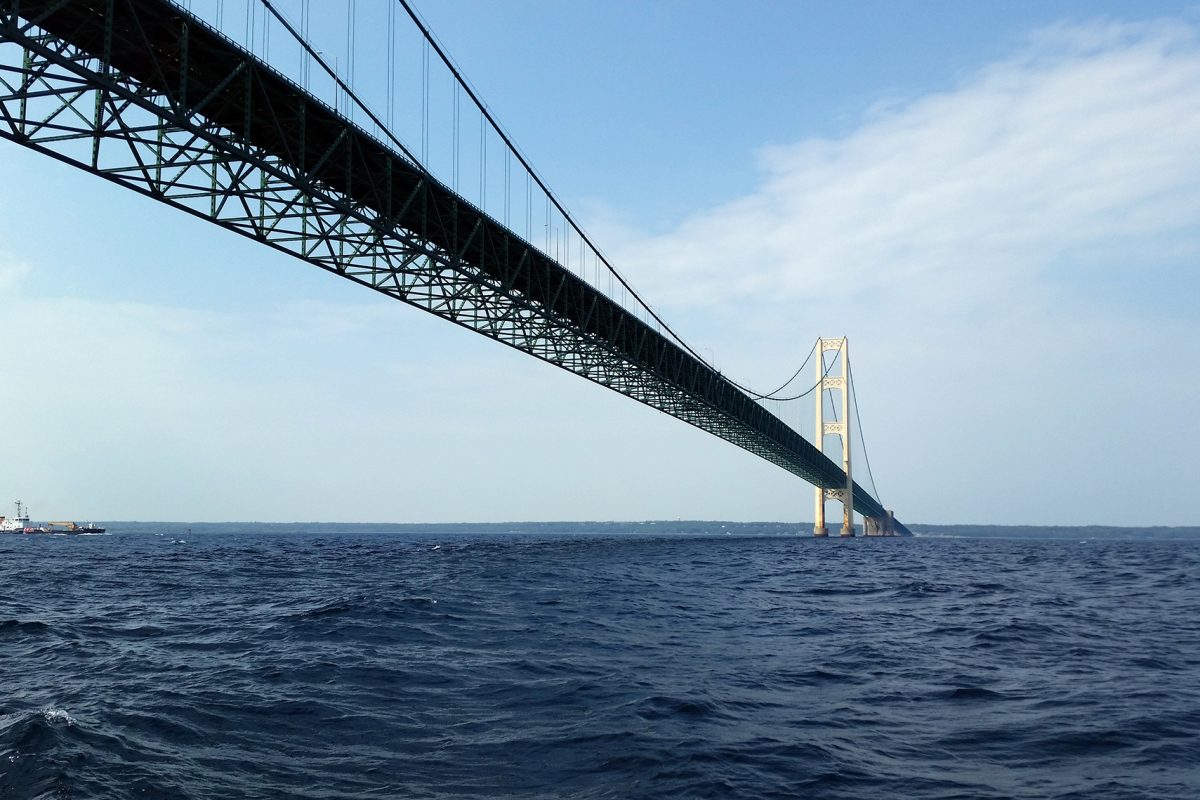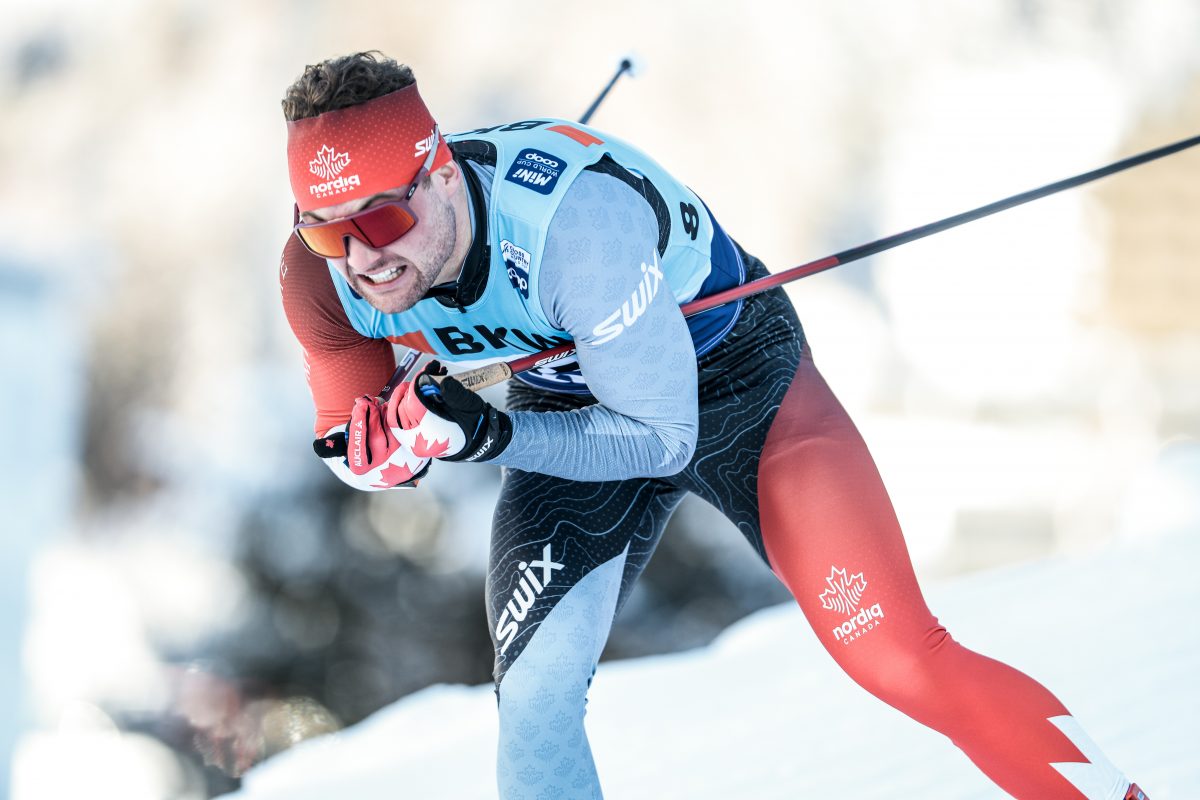
On Friday, the Canmore Nordic Centre celebrated Day 7 of Frozen Thunder with freestyle interval-start distance races, Canada’s first unofficial on-snow races of the 2016/2017 season. As with previous years, the nordic community has been out in force on Alberta’s early season ski trails.
Local skiers include members of Canada’s cross-country, biathlon and Para-Nordic teams as well as three larger clubs. The U.S. and Ukrainian biathlon teams are also in Canmore, along with a salting of top cross-country skiers from the western U.S.
With no points or selection opportunities on the line for Friday’s race, most considered it a training race. A second day of rain led some athletes to drop out or skip the distance race altogether, leaving a grand total of 97 finishers, all using the same low-fluoro wax.
Chelsea Holmes of Alaska Pacific University (APU) won the women’s 7.5 k freestyle in 18:18.6.
“We had fantastic conditions,” she wrote in an email. “It was a little bit like the APU summer training grounds on Eagle Glacier :)”
The men started first, leaving the women with a chewed-up surface of a few inches of wet, corn snow on a firmer base. Regardless, conditions remained mostly consistent from the first to last female starter.
Holmes explained she came to Canmore to spend time with her husband, who works in nearby Banff, and “to get in a race effort with a bib on and try to get my body going” before heading back to natural snow in Alaska.
Caitlin Gregg (Team Gregg/Madshus) placed second, 6.3 seconds off of Holmes’s winning time.
“I was pretty happy with my race today,” Gregg wrote. “It was honestly one of those days when I didn’t feel great (energy-wise) on course but I skied well and the result was quite good. I raced on a new pair of my Madshus skis and felt like they were a huge part of my speed out there when I was a bit off ;)”
Whereas Holmes had four weeks of glacier skiing in the summer, Gregg hadn’t been on snow since March.

“It was pretty soft [conditions] but I tried to figure out how to maintain speed by playing around with my power, tempo and technique,” Gregg wrote. “I find myself racing some softer loop courses during the year and wishing I had more practice for those conditions so today was a great learning day!”
Biathlon Canada’s Rosanna Crawford, who lives and trains in Canmore, was the top Canadian, placing third, 42 seconds back from Holmes.
“Today was not great for me,” Crawford wrote in an email. “Definitely didn’t feel great on the skis. Heavy legs. We are at the end of a pretty tough intensity block with 5 sessions on the roller ski treadmill that can leave you feeling pretty drained. The soft slushy snow also doesn’t work great for a tall girl like me!”
Crawford spent three weeks of August skiing in New Zealand with the national team and is excited to be wearing a bib on snow again.
“I love sprints and wish that I could race more of them!” she wrote. “We did a prologue in our fall Testival this year, a 3km race and that went really well for me, so hopefully I can transfer that over to snow for the skate qualifier next week!”
Like the other racers, she didn’t take the race results too seriously.
“These races don’t mean much […] because you don’t know how loaded or tired athletes are going into them. It’s just fun to get back on snow and feel the race vibes and nerves!”
Olivia Bouffard-Nesbitt of the Alberta World Cup Academy (AWCA) and U25 national team placed seventh (+1:14.7), behind her teammate on both teams Dahria Beatty in fourth, Julia Ransom (Biathlon Canada) in fifth, and Mary Rose, of the Sun Valley Ski Education Foundation (SVSEF) Gold Team, in sixth.

“I was very happy with the race today, Bouffard-Nesbitt wrote in an email. “I had a tough summer, spending 3 months on crutches due to a foot injury. My first real intensity session was only a couple of weeks ago, so I really had no expectations going into the race today. I’m happy with my decision to race because; it felt good to push hard and I was happy to see that I hadn’t lost too much fitness over the summer. This was definitely a training race for everyone, not much ski testing was done and everyone was on the same wax (LF6).”
She added that snow skiing caused less pain in her foot than rollerskiing, and Frozen Thunder marked the first time she had been on snow since March.
“[That’s] probably the longest I’ve gone off snow for the last 5 or 6 years, so it feels really good,” Bouffard-Nesbitt wrote.
Green Edges Gelso
Another leading member of Biathlon Canada, Brendan Green won the men’s 12 k, completing the six laps in 23:11.2 to edge out Matt Gelso (SVSEF Gold Team) by 4.6 seconds.
“All in all I think I raced well,” Green wrote in an email. “This was our first hard effort on snow and I feel like I was able to put in quite a good effort. There are still areas for me to work on but today was a good test.”
Green is seeing value from three weeks of New Zealand snow and the first week of Frozen Thunder. “This training season encompassed the most time I’ve ever spent on snow, and I think this has been really positive for me,” he wrote.
After ideal snow at New Zealand’s Snow Farm and first five days at home in Canmore, Green explained he was happy to race in trickier conditions.
“The course was soft but not unlike conditions we often face while racing in Europe, so in that regard it was good practice,” he wrote, adding that the Frozen Thunder course has been holding up well.
“Honestly I felt a little slow motion out there today, but that is pretty standard for an early season effort like this,” Gelso wrote in an email. “It certainly feels great to have performed as well as I did today, but the races that count begin in December and that’s when I want to be skiing fast.”
Gelso saw having bib 16 of 65 as an advantage.
“Conditions did change throughout the men’s race with much later starters seeing a pretty soft and chopped up course for their whole race instead of just the last 4 laps or so,” he wrote.
Despite four weeks of skiing in Falls Creek, Australia, with his team this summer, “an extra week of skiing at the end of October goes a long way towards being prepared to race well in early December,” Gelso noted.
Third place went to Ukrainian biathlete Olexandr Zhyrnyi, who finished 8.1 seconds back. Para-Nordic star Brian McKeever placed fourth, 4.3 seconds behind Zhyrnyi and 1.3 seconds ahead of Russell Kennedy (AWCA).

“I felt good about my race today,” Kennedy wrote in an email. “It’s always good to start the season on a positive note!”
Kennedy didn’t travel for summer snow, which made local skiing more important to him.
“Frozen Thunder is definitely a huge asset to western North America. There is no doubt that it helps get you into ski shape long before the season starts,” he wrote.
Brian Gregg (Team Gregg/Madshus) was a bit disappointed with his 14th place, 39.2 seconds back, but is more focussed on preparing for future races.
“It is nice to not have to worry about the wax component of the race,” he wrote after Friday’s race. “30 second intervals gave plenty of room on the course and the course is at least two skiers wide. The organizers and volunteers have a dialed operation.”
With only a week on snow in summer at Haig Glacier, Gregg is enjoying the chance to learn about his skis and be surrounded by elite skiers.
“I love skiing on snow!” he wrote. “The setup on Frozen Thunder is fantastic too as it offers the ability to easily test skis in a variety of snow conditions. Although it is unique to be on snow that has been saved all summer, we are finding ourselves racing more and more on transformed man made snow.”
Racing continues with a classic sprint on Tuesday, Nov. 1 and a freestyle sprint on Thursday, Nov. 3, both starting at 9 a.m. mountain time. Two Canadian men will be selected for the World Cup Period 1 based on the qualifying results. If you live in the region, Shaw TV Calgary will have live coverage of the classic sprint from 10 a.m.
FasterSkier is seeking photos from the 2016 races at Frozen Thunder. Please email submissions with caption and credit info to info@fasterskier.com.




